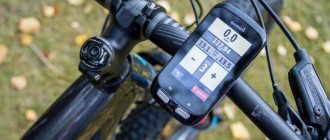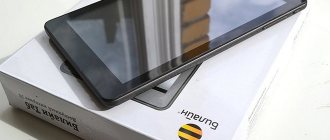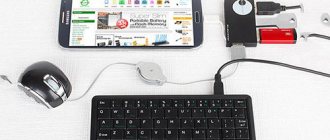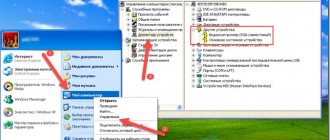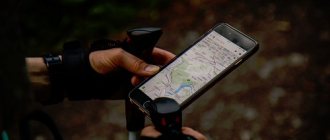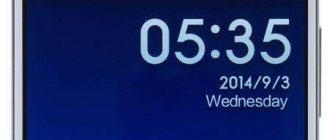Unmanned technologies are considered almost a technological miracle of the 21st century, although they did not appear today or yesterday. However, it is in our time that a variety of drone models (aerial and underwater) began to gradually change many things in the world around us. In addition to the military, scientists, specialists from various industries, firefighters, police, amateurs and professionals in the field of photography and video have begun to actively use drones.
A huge number of drones are being created not only for professionals, but also for amateurs. And if you're about to join the fast-growing community of drone pilots, you probably want to learn more about what a remote-controlled aircraft is, what components it consists of, and what the machine needs them for.
Let's look at the main elements of a quadcopter using the DJI Inspire 1 as an example.
Standard propellers
Standard propellers are responsible for the direction of the drone's movement and are located at the front of the aircraft. Although a variety of materials have been used to make propellers since the advent of drones, most production vehicles today have propellers made from either plastic or composite materials (carbon fiber).
Engineers are still working on the most efficient design of propellers to ensure stable flight, good maneuverability and resistance to wind or other weather conditions. The pilot must check the condition of the propellers before each flight, since the slightest damage can cause an accident or unstable flight. This is why it is recommended to always carry spare propellers with you when flying.
Vertical Movement of the Quadcopter
Drones use propeller motors for movement and control. You might think that they are similar to fans, because they work on the same principle - rotating propellers push air downwards. Of course, as you know, every impact force has a corresponding reaction force. This means that with the same force with which the propellers act on the air, the air acts on the propellers. This idea underlies the rise of the apparatus. It all comes down to controlling the forces of influence. The faster the engines rotate, the higher the device rises, and vice versa.
So, while moving, the drone can hover, rise up and fall down. In order for the drone to hover, the total thrust of all four engines lifting the drone must be equal to the force of gravity that pulls it down. It's easy. But what about taking the drone higher? Simply increase the thrust (speed) of all four engines to create a force greater than the force of gravity on the craft.
After this, you can slow down slightly, but you need to take into account that now three forces act on the device: the driving force of traction, gravity and air resistance. Therefore, the thrust should still be somewhat greater than when hovering. If it is necessary to lower the apparatus, then you need to do the opposite: you need to reduce the thrust of the engines (speed) so that the resultant force decreases.
Pushing propellers
Pushing propellers are responsible for moving the aircraft forward and backward in the air. The name of the propellers just shows the principle of their operation. Therefore, they are located at the rear of the drone, because their task is to suppress the torque of the drone’s engine during normal flight of the copter, so that the latter moves either forward or backward depending on commands from the control panel.
Model 8743 Low Noise Propellers for DJI Mavic 2 Series Quadcopters
From a technological point of view, pusher propellers are no different from standard ones. They are made of plastic or composite materials. They can also have different sizes depending on the drone model, and also have special protection that will save the structure from an accident and protect people from accidentally touching the edges of the propellers. Push propellers must also be inspected regularly before flight to ensure their general condition and the presence or absence of damage.
Main components of multicopters
Purely technically, about 5 years ago, three main components of multicopters (drones) appeared:
- The rechargeable battery is lithium polymer (LiPo), less often lithium-ion (Li-Ion).
- Brushless or commutator motors using rare earth elements.
- Remote Controller (Control Panel/Hardware/Transmitter)
Brushless motors
All drones produced in recent times use brushless motors, which are considered more efficient in terms of performance and operation compared to brushed motors. In any type of equipment, the design of the motor is no less important than all other components, because an efficient engine not only ensures excellent piloting (in the case of a drone), it also reduces your costs for maintenance and the purchase of additional equipment. The more powerful the engine, the longer the drone's battery life and the longer its flight. Engine power also affects the payload the drone can carry: camera and other equipment.
Differences between brushed and brushless motors
An excellent example is DJI's development of its series of industrial drones: Inspire 1, Inspire 2, Matrice and Agras series of drones. Of course, DJI also has competitors in this regard, striving to produce aircraft with powerful engines, but so far the Chinese company is one step ahead, creating not only powerful, but also economical and low-noise units.
Let's start assembling
First of all, we install the control board. At the same time, place it as close to the center of your platform as possible. From the very beginning, take the necessary, and most importantly, accurate measurements. In this case, the device will not drift from side to side during the flight. Use self-tapping screws of sufficient length to screw the beams to the board. An aluminum strip is suitable for landing skis and holding the battery.
Install the receiver close to the board. To install the receiver, you can use some powerful superglue. A simplified version of connecting with two three-wire cables is possible in the case when the receiving channels are the same in purpose as the control board channels. Keep this in mind.
Landing gear
It is not always necessary for a drone to have a landing gear. Some small models are designed so that you can land on the bottom panel or something similar without any problems. Other models, and most of them, are equipped with different chassis options. For some they resemble helicopter skis, for others they have intricate “legs”. It all depends on the specific model, its purpose and equipment. For example, drones used for aerial photography, which means equipped with a gimbal camera, usually have a high chassis with high ground clearance. All DJI Phantom models from the first to the latest version are initially equipped with such chassis. Industrial drones of the Matrice line, also developed by DJI, also have high chassis.
But for the Inspire and Mavic series drones, the chassis is something like legs installed under the engines at the ends of the “arms” of the frame. At the same time, due to the low-mounted camera, the Inspire's landing gear drops lower when landing, and rises slightly in flight, improving the visibility for the camera. With Mavic, due to the peculiarities of the camera location, such a solution is not required, but its chassis folds together with “arms” and propellers, turning the drones of this series into one of the most compact and easy to transport.
DJI Inspire 1 quadcopter with rising arms and landing gear
The purpose of the drone and the ability to hang additional payload under the bottom panel (for example, a camera or cargo) influence technical decisions for the landing gear. In some cases, they are made fixed (like the same Phantom series), and in other cases, the landing gear can be retracted, providing the camera with a 360-degree view, which is important for specialized drones (for inspection, firefighting, search and rescue, etc.) .
General principles of construction
A quadcopter with a camera or the simplest model is built on a power frame. This is the main part of the structure. At its corners there are legs with engines attached to them. For user convenience, some quadcopters use rotating blocks. Such knees at the base of the legs provide electrical contact and at the same time offer convenience to the owner of the mechanism: the drone can be folded compactly for ease of carrying.
To facilitate landing, runners are attached to the bottom of the frame. Their design can be very different. An expensive quadcopter looks like a helicopter, with durable, metal skids. Cheap models can only be equipped with thin rubber attachments glued directly to the frame.
Advice! If a quadcopter is needed for special work with precise positioning and landing on an uneven surface, it is recommended to choose a product with thin legs.
The power frame also performs a decorative function. It is the most visible part of the structure. The shape of the frame creates the overall appearance of the quadcopter. Each manufacturer tries to ensure that their device is not only functional, but also looks stylish, beautiful, and sells well at first glance at the photo. Therefore, frames are made in a variety of shapes, sometimes with dimensions that do not in any way indicate the dimensions of the internal filling.
Electronic Speed Controllers (ESC)
An electronic speed controller (ESC) (other names: electronic speed controller, electronic cruise control) is an electrical circuit that is designed to control the speed of a drone (as well as other types of aircraft, since airplanes also have this device in various modifications) . Essentially, this important device transfers energy from the battery to the brushless motor, converting the DC power supply into the AC power that the motor needs.
The operating circuit of the electronic speed controller involves supplying (input) voltage from the battery and receiving signals from the flight controller (drone on-board computer). But at the output from the regulator, control voltage is supplied to the drive. From this it is clear that the speed controllers must be compatible with the flight controller when a specific drone model is being designed and assembled. In addition, they must consume less current than they supply. The current for the drive is calculated based on the characteristics of the motor and propeller plus 20-30%.
We can talk about regulators for a long time, but their importance for drones is undeniable. This is evidenced by the simple fact that modern drones are completely dependent on this type of device for normal flight and performing all the tasks assigned to a specific type of aircraft. That's why DJI and other electric drone makers are working hard to improve electronic flight controls. With the release of each new drone model, DJI tries to make improvements to the ESC, which it is sure to inform the future consumer about, for example, lower energy consumption and higher performance.
Special speed controllers for DJI Takyon Z14120 racing drones
Where are electronic speed controllers installed? Typically, these devices are located in the frame of the aircraft. For DJI drones, they are usually located in the “hands” closer to the engines. Many modern drone models are equipped with fairly advanced ESCs that can operate in various modes. And this is impossible without high-quality software (firmware). The firmware must be updated regularly to correct errors in control codes, as well as to improve the efficiency of the device (reducing current consumption, etc.). If you purchase one of the DJI brand copter models, then you will not have to force a software update, because when a new firmware version is released, everything happens automatically. Therefore, you personally will not have to make any changes to the operation of the ESC.
What tasks does the device perform?
Today, copters are used in a wide variety of applications, including many useful tasks. Without this equipment, TV shows about travel would be boring, and video bloggers would not be able to show even a tenth of the beauties that you have the opportunity to watch. Specially tuned drones equipped with thermal imagers greatly facilitate the work of rescuers.
The main areas of use of aircraft technology:
- shooting video from a bird's eye view, obtaining unique footage with minimal investment;
- sports – there is a series of racing drones that reach enormous speeds and participate in competitions;
- rescue, search operations - drones are used to search for lost people;
- hunting - tracking wild animals in any area at any time of the day;
- geodesy - creating a site plan, checking boundaries, other cadastre tasks;
- courier delivery - this application is actively being developed by world leaders in the field of goods delivery;
- programming – some models of copters can be trained by introducing your own code.
Many potential buyers wonder why a quadcopter is needed. In most cases, they buy devices for shooting from the air. There are also models that are well protected from moisture and can shoot underwater or in rainy weather. The development of the drone industry brings new opportunities to buyers.
Flight controller
The flight controller acts as the motherboard or even the on-board computer of the drone. To simplify its tasks somewhat, the flight controller is responsible for transmitting all commands that the pilot transmits to the drone. More precisely, the controller’s tasks include interpreting incoming data from the receiver (receiver), GPS module, battery monitor and on-board sensors. In addition, the flight controller interacts with the electronic controllers and thereby monitors engine operation and speed control, which is part of the tasks of controlling the copter. But this, of course, is not all. Any commands - launching and operating the camera, controlling the autopilot mode and other autonomous functions - are all sent by the flight controller. Typically, the user does not need to make any changes to the operation of the device, as this may negatively affect the performance of the drone.
The DJI A3 flight controller interfaces with the IMU and geo-positioning system to provide highly accurate data during piloting and filming.
Pros and cons
Advantages of a four-rotor multicopter:
- Operation is inexpensive. Even if there is a breakdown, spare parts can be easily picked up in the store and replaced.
- The flight is very stable.
- Capacious battery. A good battery ensures long-term operation of the device, the ability to move small loads and produce long-term video recording.
The only drawback is the price. There are also budget models, but the quality of materials is not always the best. In addition, only the essentials are installed on it. If you need a quadcopter for professional use, you will have to shell out a considerable amount of money.
Transmitter
The transmitter is the device responsible for transmitting radio signals from the controller to the drone to issue flight direction commands and other related parameters. Like the receiver, the transmitter must have at least four channels to work with the drone, but 5 is usually also recommended. Just like with receivers, there are many modifications of receivers on the market today from different manufacturers. This fact will most likely be of interest to those who would like to assemble their own drone, since in the case of replacing the device on models from DJI, branded products and products of those brands that have partnerships with the Chinese manufacturer are used. The receiver and transmitter must use the same radio signal to communicate with the aircraft during flight. Each radio signal has a standard code that helps to distinguish your signal from others on the air.
Latest DJI Lightbridge 2 transmitter
How does it fly
The principle of operation of a quadcopter is quite simple: four motors on extended legs create lifting force . There are several standard operating modes:
- lifting with simultaneous starting of engines;
- tilting to the sides with changing the speed of the left and right pair of engines;
- descent with a lift force less than the weight of the structure;
- gaining speed in a straight line by changing the operating modes of the front and rear pair of engines.
Already from the listed points it is clear that the quadcopter operates according to the helicopter scheme. Only instead of tilting the blade shaft, as is done in a winged aircraft, the difference in air flows on the sides of the drone is used to form the lateral force vector.
It is more difficult to understand how the quadcopter rotates in place. A large helicopter will help again here. Its main blade, rotating in one direction, transmits torque to the body in the opposite direction. To compensate for parasitic rotation, a large helicopter has a blade on its tail.
The copter uses the same principle of generating reverse torque for its own rotation. Its four screws work in pairs. The twin blades rotate in different directions. At the same speed, the torques that arise are compensated. When you need to rotate the drone around its axis, the engine speed of one of the pairs decreases. The resulting moment rotates the entire structure.
Satellite navigation module (GPS, GLONASS, Beidou).
Many modern drones are equipped with satellite navigation modules. Most often this is a GPS module, but on many of the latest drones from DJI you can find a dual navigation system, which can include a combination of GPS and GLONASS or GPS and BeiDou. Depending on the installed combination, such a drone can be effectively operated in certain regions of the world. An example would be the DJI Matrice 200 series of industrial drones.
A satellite navigation module (or combination of modules) provides the drone's on-board computer with data on the location of the device (longitude, latitude and altitude). Such a rather complex navigation system is necessary primarily for specialized drones that fly over long distances and/or perform fairly complex security tasks, military tasks or work in industry.
GPS Module and IMU Board for DJI Mavic 2 Pro/Zoom
However, the tasks of the satellite navigation module are not limited to those described above. With its help, the aircraft not only orients itself in space during flight, but can also automatically land accurately on the “base”, even if its visual sensors and standard camera do not work, and communication with the remote control is lost. Thus, the satellite navigation module will help ensure flight safety.
Flight stabilization
In addition to converting operator commands into engine commands, the flight controller stabilizes the platform's flight. Stabilization is necessary for several reasons:
- non-identity of propeller-motor groups (VMG)
- non-identical speed controllers
- uneven load distribution on engines due to a shift in the center of gravity
- blown away by the wind
To compensate for these effects, the flight controller has an inertial measurement system, which includes an accelerometer, gyroscope, magnetometer and barometer. More expensive models additionally use GPS receivers. Even in those moments when the operator is trying to simply hold the copter in place, the flight controller continues to actively change the engine thrust of the engines, compensating for all possible accelerations and rotations. Links to the rest of the series of articles about quadcopters: Part 2. Quadcopter elements Part 3. All about batteries for quadcopters Part 4. Quadcopter frame Part 5. Copter backlight Part 6. Connecting quadcopter elements Part 7. Setting up the Turnigy9x remote control for a quadcopter Part 8. Configuration brushless motor speed controllers Part 9. Setting up the DJI NAZA flight controller Part 10. Gyro-stabilized gimbal for the SJ4000 camera
We will be very glad if you support our resource and visit our product store shop.customelectronics.ru.
Battery
Since many modern drones fly using brushless motors, that is, electric power, the battery is one of the main parts of the drone. Without it, it is impossible to launch the drone and complete all assigned flight tasks. However, if you control the drone with a remote control (joystick), then you need to remember that it also runs on its own battery. The battery on board a drone is most often called a flight battery (onboard) and can have different parameters (type, capacity, power, presence or absence of intelligent functions, etc.).
Battery with self-heating function for operation in temperatures below 0 for DJI Mavic 2 series drones
It is clear that different drone models have different requirements not only for the power plant, but also for the battery as a power source. Small and hobbyist drones are equipped with small batteries with low capacity and power, which ultimately affects flight time and calculated payload. For comparison:
- DJI Spark – 1480 mAh – 16 minutes of flight
- Ryze Tello – 1100 mAh – 13 minutes flight time
- DJI Mavic Air – 2375 mAh – 21 minutes of flight
- DJI Mavic 2 Pro – 3850 mAh – 31 minutes of flight
- DJI Inspire 2 – 4280 mAh – 27 minutes of flight depending on load
- DJI Phantom 4 V2.0 – 5870 mAh – 30 minutes of flight
Specialized ones (industrial drones and platforms) require a more capacious and powerful battery due to the complexity and large volume of tasks being solved. Hence the other parameters of the power supplies, as well as the resulting flight time and payload weight. For comparison:
- DJI Matrice 100 – 4500 mAh (additional 5700 mAh) – depending on payload and number of batteries, flight and hover time from 20 to 40 minutes
- DJI Matrice 600 Pro – 4500 mAh (optional 5700 mAh) – depending on payload and number of batteries, flight and hover time up to 38 minutes
DJI, like its competitors, is constantly researching to improve flight batteries. For example, monitoring the battery status has become quite common today. Now the pilot will know in time not only about the battery charge level, but will also be able to receive information about when to return the drone to the base so that it does not crash due to a completely discharged battery. In addition, DJI began producing special heated batteries that allow its drones to operate at low temperatures, which was previously simply impossible.
Difficulty in management
A beginner at the learning stage may encounter some control difficulties. They are mainly related to the spatial orientation of the device and the coordination of the movements of the sticks, which, I must say, is really very unusual at first.
However, for such cases, many manufacturers (in particular, budget modifications) have provided such a useful function as Headless Mode. It changes the orientation of the drone in such a way that the pilot does not need to think about where the back of the quadron is and where the front is.
Camera
There is some diversity in this regard.
If the first drones were delivered without cameras and at best had some accessories for attaching conventional cameras used on the ground, now the situation has changed. Some drones come with a built-in camera (a striking example: the Mavic, Spark, Ryze Tello series). In other cases, the drone may be equipped with a gimbal camera that you can remove (and even install other compatible ones), or you can buy a copter without a camera, to which you can later buy a standard gimbal camera. The advantages of devices with cameras are obvious, because then they turn into “flying cameras”, with the help of which you can conduct both amateur and professional filming from the air. The film “Riders”, shot using a DJI Inspire 2 quadcopter and a DJI Zenmuse X7 camera gimbal, is one of the most striking examples of dynamic aerial filming
MultiWii
The next milestone in the development of copters was the MultiWii system. The name comes from the Nintendo Wii game controller and Wii Nunchuk, which craftsmen disassembled and cut out a board with sensors. Arduino Nano was used as the central processor. The appearance of the board turned out something like this (photo from the rcgroups website, 2010):
However, over several years the system has evolved, and the latest boards (they are still on sale now, the issue price is $20-30) look something like this:
(photo from Hobbyking.com)
The latest versions of MultiWii have quite good sensors, they can hover at a point using GPS, maintain altitude and return home. Because Multiwii was written for Arduino, all boards remain Arduino-compatible, the source code can be downloaded on Github. One of the disadvantages of MultiWii is its weak processor, which limits the computing capabilities of the algorithms; later clones began to appear on the STM32, but they did not make a difference, because In terms of hardware, any quadcopter is quite simple; 95% of the complexity lies in the code. At the same time, I am sure that it was the MultiWii source code that became the basis of all today's commercial systems.
Wiring
Using adapters, make a parallel connection of 4 power wires. In the place where the battery will be connected to all four wires, you will need to use detachable connections. In other places soldering will be necessary. Then heat-shrink all the parts so that during strong vibration (when the copter is flying) nothing will jump out and become detached.
Now let's work on the control board and connect the driver wires. In principle, after this operation you can do a small check and eliminate problems that are revealed during testing.
Peculiarities
The structure of the copter involves the installation of 4 motors and the same number of propellers. This distinguishes it from other multicopters - hexacopters and octocopters (models with 6 and 8 beams and propellers).
Two motors rotate clockwise (CW), and the second pair rotates counterclockwise (CCW). This combination is designed to compensate for torque and ensure ongoing stability.
The relative cheapness of components, reliability and small size are the main advantages of the best modern copters. They have excellent maneuverability and high load capacity, which is enough to carry a three-axis stabilized gimbal and flight camera.

